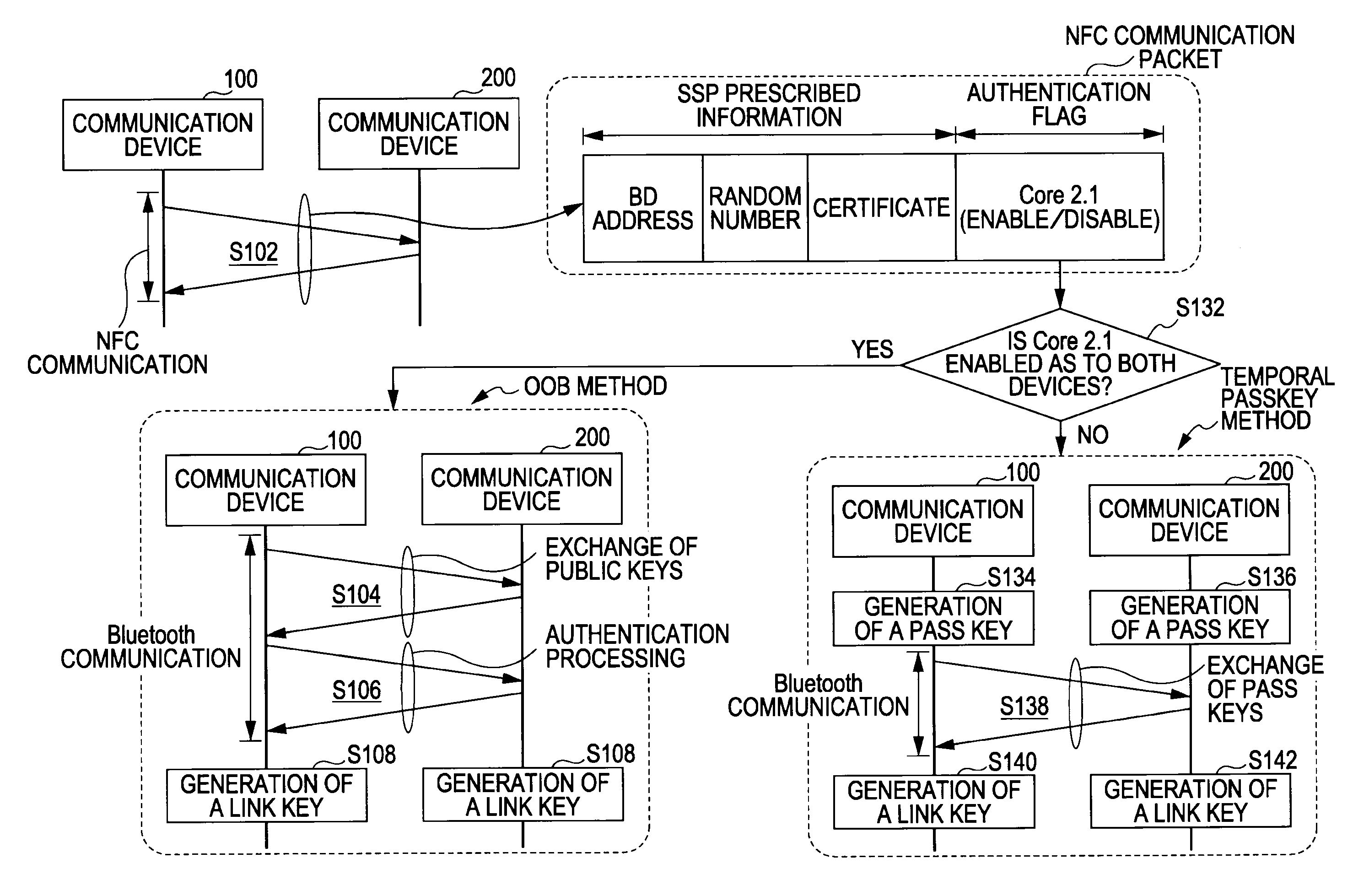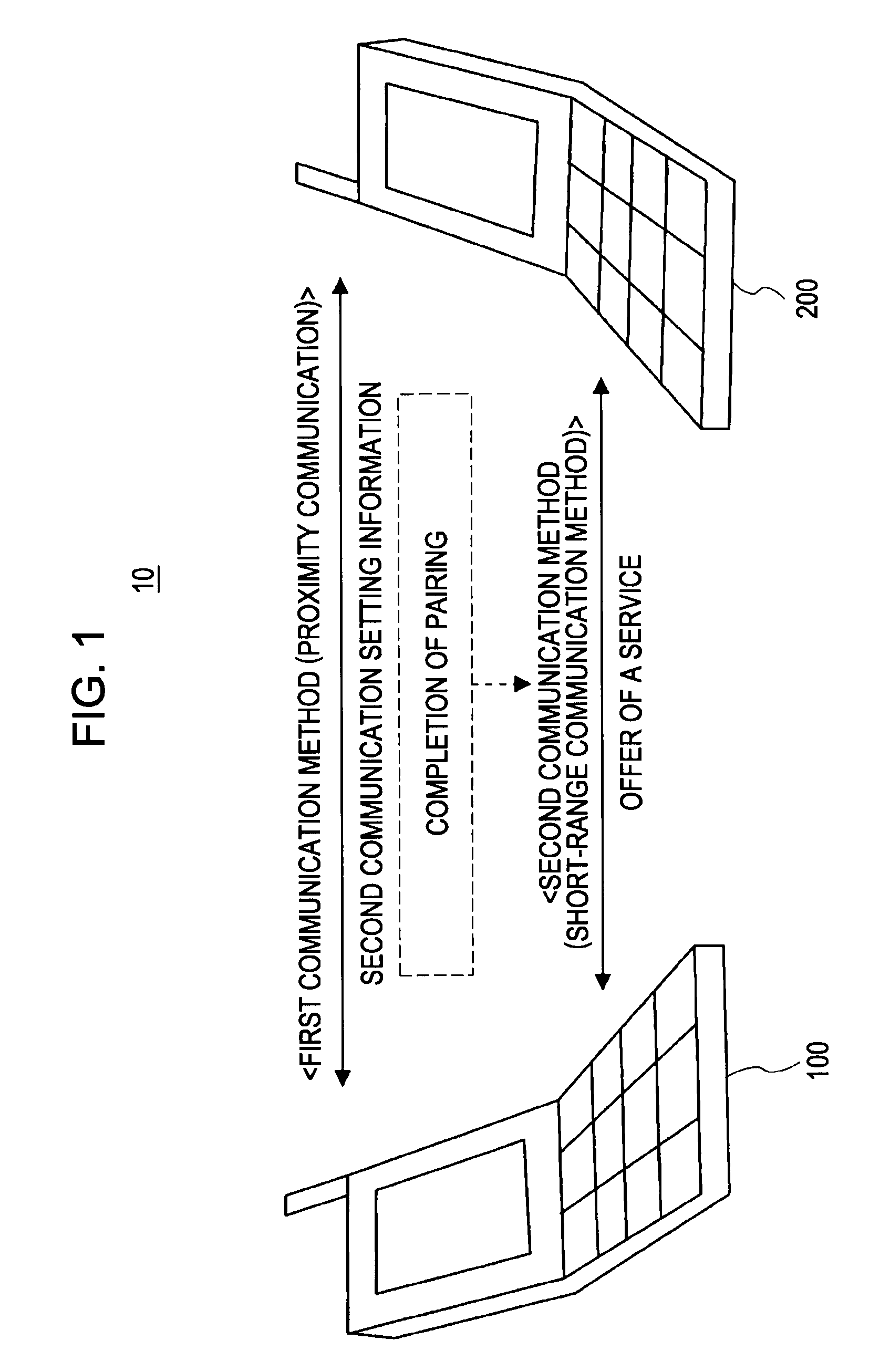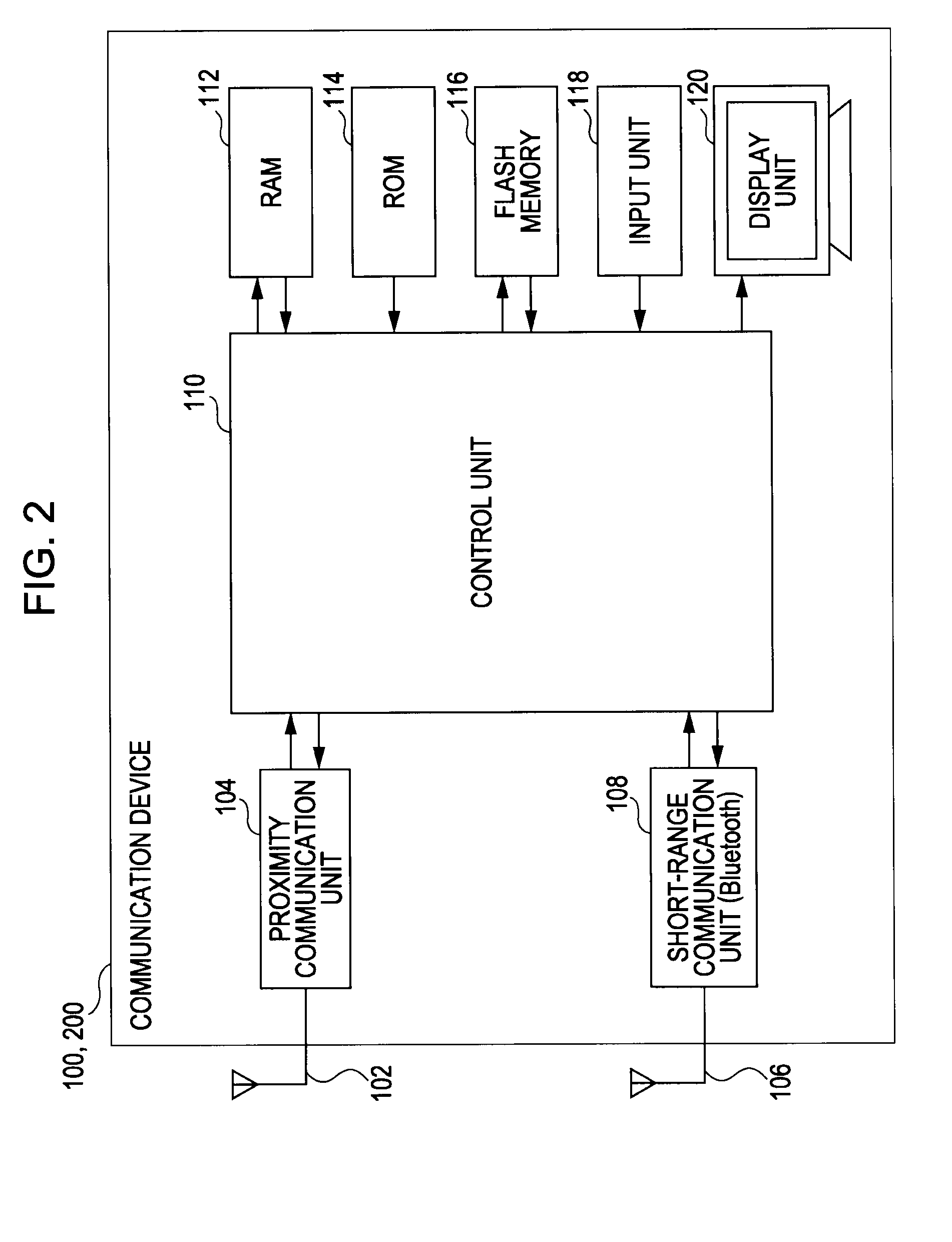Communication device and communication method
a communication device and communication method technology, applied in the field of communication devices and communication methods, can solve the problems of increasing circuit scale, increasing costs, and user performing traditional troublesome low-security network settings, and achieve the effect of reducing the burden on users relating to settings
- Summary
- Abstract
- Description
- Claims
- Application Information
AI Technical Summary
Benefits of technology
Problems solved by technology
Method used
Image
Examples
first embodiment
[0059]First, a first embodiment of the present invention will be described. The present embodiment shows a case where a technique according to the present invention is applied to the BT authentication method, as an example (see addendum 1).
[0060]Hereafter, description will be made according to the following order. First, description will be made regarding a system configuration example of a communication system 10 to which a communication method according to the present embodiment can be applied. Subsequently, description will be made regarding a functional configuration of communication devices 100 and 200 which can realize the BT authentication method by employing an NFC device. Subsequently, description will be made regarding a packet configuration of an NFC communication packet. Subsequently, description will be made regarding procedures of the BT authentication method equivalent to the non-public key system (authentication method before Core Specification version 2.0 or before)...
specific examples
[0119]For example, let us consider a case where a connection source device not belonging to any network becomes a master, and is connected to a connection destination device which has already formed a piconet.
[0120]As one case (Case 1), there can be conceived a case where a connection destination device is enabled as a master, and disabled as a slave, and a connection source device is enabled as a master / slave. In this case, the role of the connection destination device is fixed to a master, so the connection source device becomes a slave. Note that exchanging NDEF messages serves to identify enabling / disabling of each other. As a result thereof, a new network is formed as a single piconet wherein the connection destination device is assigned as a master, and multiple devices including the connection source device are assigned as slaves.
[0121]On the other hand, there can be conceived a case (Case 2) where the connection source device is enabled as a master, but disabled as a slave, ...
second embodiment
[0123]Next, a second embodiment of the present invention will be described. The present embodiment shows a case where a technique according to the present invention is applied to the WLAN authentication method, as an example. With the above-mentioned first embodiment, description has been made regarding the case of BT as an example, but with the present embodiment, description will be made regarding the case of WLAN as an example.
[0124]With the authentication method of the OOB method included in the version 2.1 of BT Core Specification, and the authentication method of the OOB method included in WPS, secure packet exchange of setting information by the public key system can be cited as a common point from a technical viewpoint. On the other hand, from a usability viewpoint, convenience such that authentication is completed only by approaching an NFC device can be cited as a common point. On the other hand, a great difference with both standards is in that the mode of a network confi...
PUM
 Login to View More
Login to View More Abstract
Description
Claims
Application Information
 Login to View More
Login to View More - R&D
- Intellectual Property
- Life Sciences
- Materials
- Tech Scout
- Unparalleled Data Quality
- Higher Quality Content
- 60% Fewer Hallucinations
Browse by: Latest US Patents, China's latest patents, Technical Efficacy Thesaurus, Application Domain, Technology Topic, Popular Technical Reports.
© 2025 PatSnap. All rights reserved.Legal|Privacy policy|Modern Slavery Act Transparency Statement|Sitemap|About US| Contact US: help@patsnap.com



